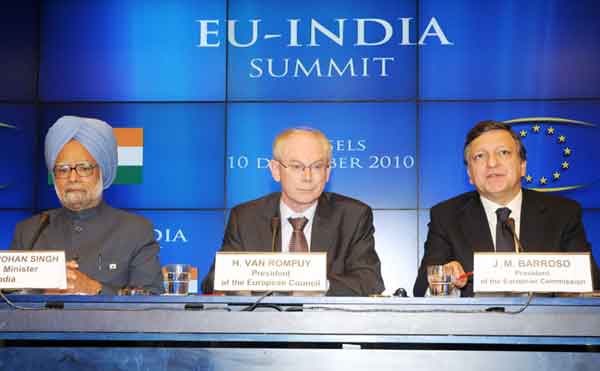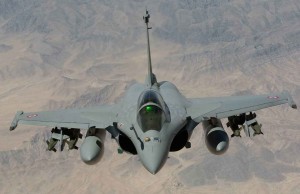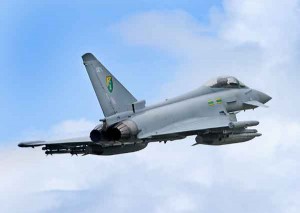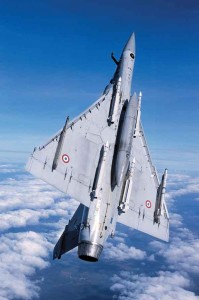
The Prime Minister, Dr. Manmohan Singh with the President of the European Council, Mr. Herman Van Rompuy and the President of European Commission, Mr. Jose Manuel Barroso, at the Joint Press Interaction, in Brussels, Belgium
To appreciate better the subject of India’s defence relations with Europe some reflections of a general nature would be pertinent. The point needs to be made right at the start that India does not have defence relations with Europe as such; it has them with individual European countries. Europe has forged a strong economic personality in the form of the European Union, but it has failed to develop a common foreign and defense policy in the true sense. When it comes to economic issues India, like other countries, has to deal with Brussels.
In foreign affairs Europe has acquired some role as an interlocutor through the High Representative of the Union for Foreign Affairs and Security Policy, with India holding a regular dialogue with the EU as a dialogue partner. But in defence relations India deals, not with Brussels, but with individual capitals.
Europe has forged a strong economic personality in the form of the European Union, but it has failed to develop a common foreign and defense policy in the true sense.
It also needs to be pointed out that even though the EU exists as a shared economic space protected by common external tariffs, individual European countries commercially compete with each other intensely in foreign markets. In the defence area such competition is even more spirited as the overall cake is much smaller, the opportunity to win sizable contracts are not many, the contracts are generally high-valued and the margins are considerable. Also, the contracts create a long term relationship, with provision of spare parts, training, overhauling, periodic upgrades, modernization etc providing plentiful returns.
Defence ties, besides, have a political element that commercial exchanges do not have. Countries with serious political differences, including the potential of conflict, can have flourishing economic ties, as is the case between US and China or Japan and China, not to mention political differences between Russia and Europe not standing in the way of their close energy ties. In such cases defence ties are excluded because that pre-supposes a degree of geo-political understanding beforehand.
Such ties also give the country that sells arms a degree of political leverage over the recipient country because the latter becomes dependent on the former for its defence preparedness. The danger is always there that at a critical moment spare parts may not be released or needed ordnance may not be available because of imposition of sanctions or the existence of a conflict situation. All these aspects are very relevant to India’s defence ties with European and other countries.
India’s defence relations with European countries have reflected, over the years, India’s foreign policy choices, its adherence to the policy of non-aligment during the Cold War and the impact of the Cold war on our region with Pakistan deciding to join western military pacts and receiving military aid from the West. The position taken by European countries and others on India-Pakistan differences, especially on J&K, that taken by individual European countries on sanctions imposed on India because of India-Pakistan hostilities or the degree of reticence in selling arms in order to avoid sharpening tensions in a region seen as unstable. India’s nuclear and missile programmes have also had a bearing on the policies of European countries with regard to transfer of sensitive or dual use technologies barred under the technology denial regimes set up by the West.
Not many countries, even in Europe, manufacture advanced defence systems that can be sold in the international market. Defence manufacturing is a high-cost enterprise as very advanced technologies are involved, which, in turn, require huge outlays on R&D for development.
India’s nuclear and missile programmes have also had a bearing on the policies of European countries with regard to transfer of sensitive or dual use technologies barred under the technology denial regimes set up by the West.
The need to export in order have some economies of scale and amortize development costs is therefore a pressing one. All the more so because in the absence of any real external threat European countries have had to reduce their defence budgets and the size of their standing armed forces, with the consequence that domestic orders for defence equipment are not sufficient to achieve the wanted economies of scale.
Conflict-Free Space
Europe’s great success is, in fact, the creation of a genuinely conflict free geographical space in a continent that has witnessed the most inhumane and destructive wars in the past. No European country is threatened with aggression by a neighbour. This should have argued in favour of a massive contraction of the European defence sector. Ironically, outside the US which maintains a gargantuan defence sector, and Russia which inherited an oversized defence manufacturing base from the Soviet Union but which has declined considerably, individual European countries still retain impressive defence manufacturing capabilities. There is little relationship between the external threat European countries face and the wherewithal they maintain to defend themselves.
For the bigger European powers which have wielded power internationally for a very long period and are habituated to it, and which have fought with each other and with others in order to advance or preserve their interests or impose their will, the possession of a sizable defence industry is an expression of their continued big power status. It gives credibility to their role in maintaining international peace and security whether institutionalized in the Security Council, within the ambit of NATO, a “coalition of the willing” or self-assumed in the light of their national interests. Their military capabilties give them the means to project their power outside. Besides this, the civilian off-shoots of defence technologies are also very important as they have a bearing on the efforts of these countries to remain in the forefront of global-level technological innovation.

The Dassault Rafale has been selected as the preferred bidder for the Indian Air Force (IAF) Medium Multi Role Combat Aircraft (MMRCA) competition. This programme is massive, with 126 aircraft initially for the IAF and potential for at least 63 more. On top of that the Indian Navy could order the aircraft as well. (Photo: French Air Force)
For Europe, rivalry with the US, which is both an ally and a competitor, is a powerful reason to maintain a sizable, independent defence manufacturing base. If, on the one hand, the trans-Atlantic alliance in the form of NATO provides Europe with the US defence umbrella and allows it to reduce its defence expenditure, fears of loss of independence in foreign policy making and subservience to the US makes the major European countries retain sizable defence capabilities.
With the lessons from the conflict in Yugoslavia in mind, these countries also want to be able to maintain peace at least on the periphery of Europe largely on their own rather than relying entirely on the US for this. The French, for example, have long pushed for a common European defence policy, but without much success because of the NATO factor and the opposition of many European countries, especially those from the erstwhile Soviet block, not to mention the UK, to any dilution of the US role in European defence.
One needs to keep also in mind that while India and others deal with individual European countries for defence cooperation and purchases, in actual fact Europe’s defence manufacturing has become mostly “multinational”. Much of this sector has either been privatized in Europe or enterprises are jointly owned by governments and private capital.
The economies of scale are sought to be obtained within Europe itself by various countries pooling requirements and jointly funding defence production programmes. Work is shared between countries often in proportion to the size of the procurement orders placed by them. Equipment manufactured by one country has in it components manufactured in other countries, such is the nature of collaboration in defence manufacturing today.
In view of all the acquisitions and mergers that have taken place as part of a consolidation process the industry has undergone in the face of high costs, competition and declining orders. Hardly any product is now purely “national”. Even when a European product is being bought it is likely to have US made components in it. At the level of tie-ups in capital, the trans-national nature of major European defence manufacturing companies is even more of a reality.
The European Aeronautics, Defence and Space company(EADS), for example, was created in 2000 by merging French (Aerospatiale-Matra), German(DASA) and Spanish (CASA) companies. Its missile branch was merged with BAE systems of the UK and Finmeccanica of Italy to form the MBDA. The Eurofighter, the other contender for our MMRCA contract, is jointly produced by Germany(DASA), Britain( BAE), Italy( Aeritalia) and Spain(CASA). Dassault, whose Rafale has been selected for negotiations for the acquisition of 126 combat aircraft by India, is owned by Dassault Group (50.55%) and EADS(46.33%), which means that even if the Eurofighter has been excluded from the 126 aircraft competition, EADS, the manufacturer of the Eurofighter, will financially benefit from the Rafale deal.
Augusta Westland, which has signed a joint venture agreement with Tata Sons to assemble its AW 119 helicopters is an Anglo-Italian company. Turbomeca, the French aircraft engine maker is tied up with Rolls Royce. Thales, another French company, which is involved in India defence programmes, is tied up with Raytheon from the US and BAE from the UK. BAE, the manufacturer of the Hawk trainer aircraft sold to India, the Ultra Light Howitzers that India has decided to acquire through the US FMS route and a parther in the Eurofighter, has made several acquisitions in the US.
For historical reasons India had close defence ties with the UK for some years after 1947, to the extent that India’s Naval Chief was a Britisher till April 1958, with Britishers also the Air Chief till April 1954 and Army Chief till January 1949. India’s Centurion tanks, Vampires, Canberra, Hunter and Gnat aircraft, and Leander class frigates were of British origin. But Cold war politics, British support for Pakistan and interference in the Kashmir issue in Pakistan’s favour, a reluctance to strengthen India miltarily against Pakistan, inevitably led to a dilution of the defence relationship.
France, amongst all the European countries, has been seen as the most reliable partner. It has studiously avoided imposing sanctions on India whether because of India-Pakistan tensions or even in the wake of India’s nuclear tests…
Within Europe, France, whose commitment to Pakistan was not of the same order and which was not mentally hostage to any colonial era responsibilities towards Pakistan or the sub-continent, was an alternative source. India acquired from France, in the 1950s itself, Ouragan, Mystere and Alize aircraft, AMX tanks and air to surface and anti-tank missiles. In the 1960s India went in for licensed production of French Alouette helicopters, to which were added Lama helicopters for high-altitude operations in the 1970s.
The biggest consequence of Cold War politics was India’s turn towards the Soviet Union beginning in the 1960s for defence supplies and licensed production of equipment, to the point that Russia accounts today for almost 70% of India’s military hardware.
France, amongst all the European countries, has been seen as the most reliable partner. It has studiously avoided imposing sanctions on India whether because of India-Pakistan tensions or even in the wake of India’s nuclear tests in 1998, besides being the first to establish a strategic partnership with India, indicating clearly how it perceived India’s role in a developing multipolar world. In the 1980s India signed the agreement to procure Mirage aircraft from France. A $2.4 billion deal was inked in July 2011 with Dassault Aviation and Thales to upgrade 51 of these Mirage aircraft.






